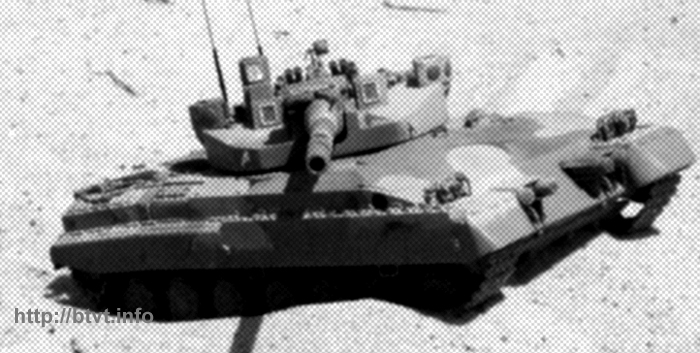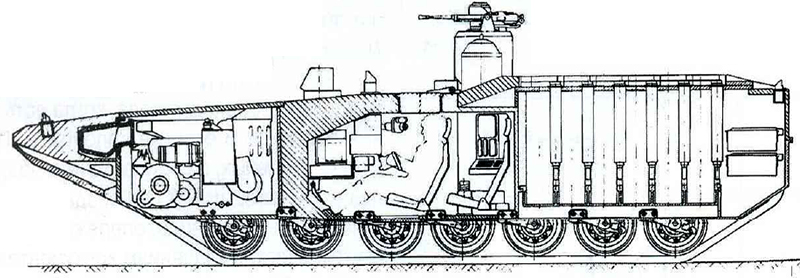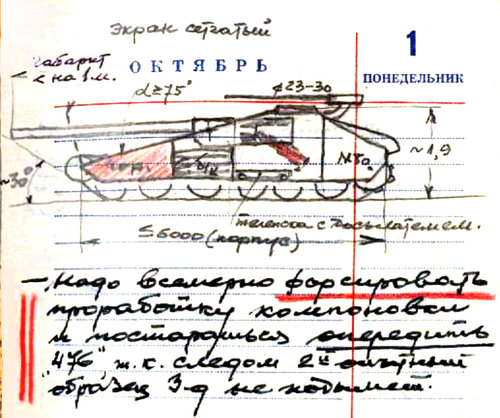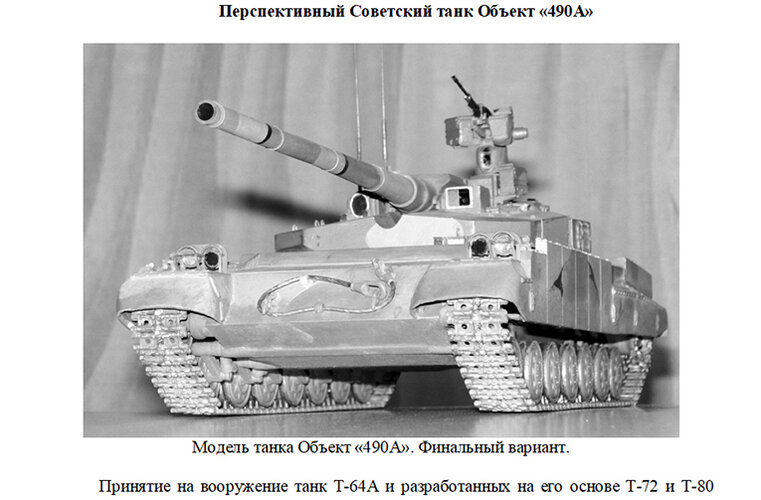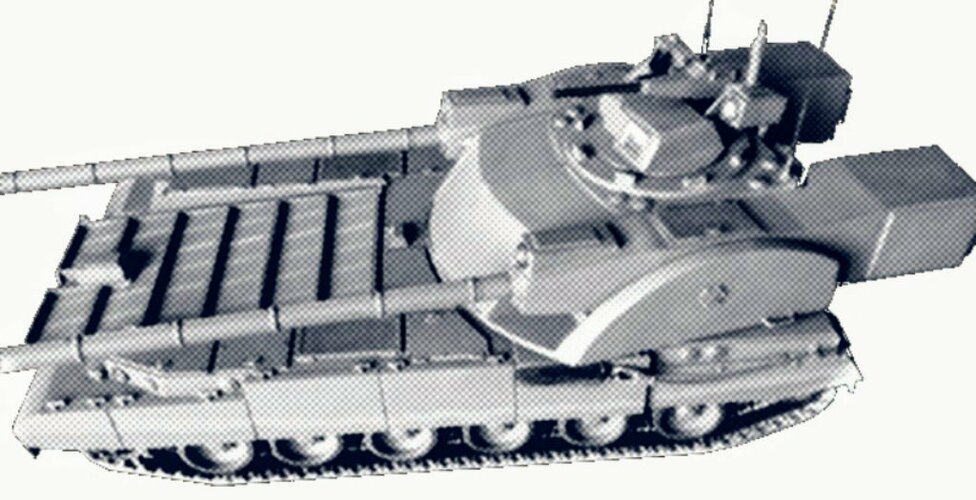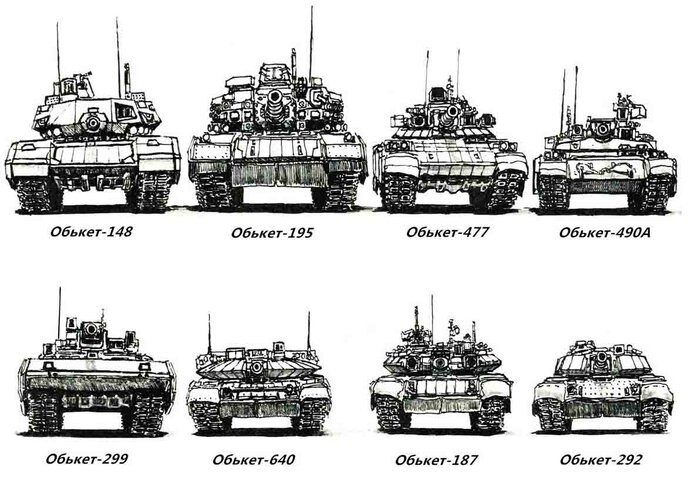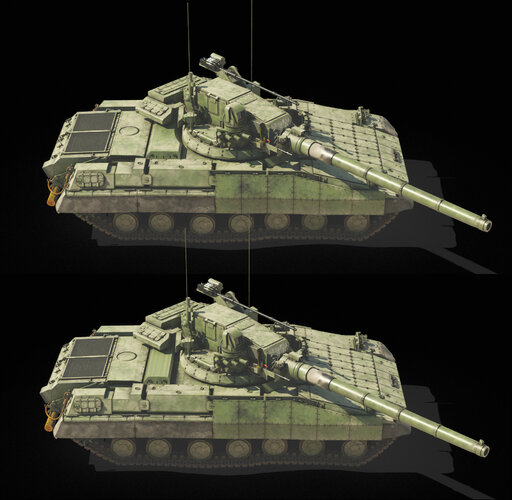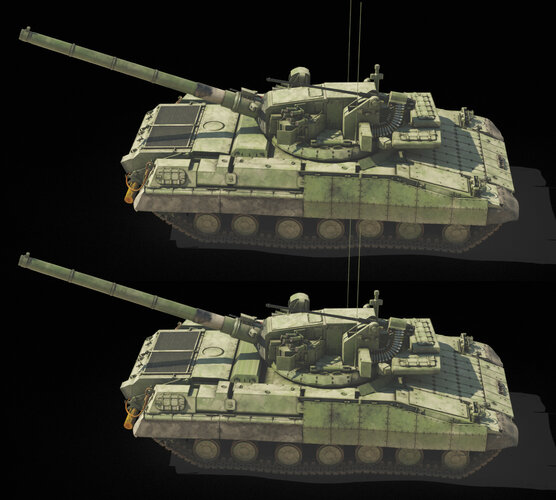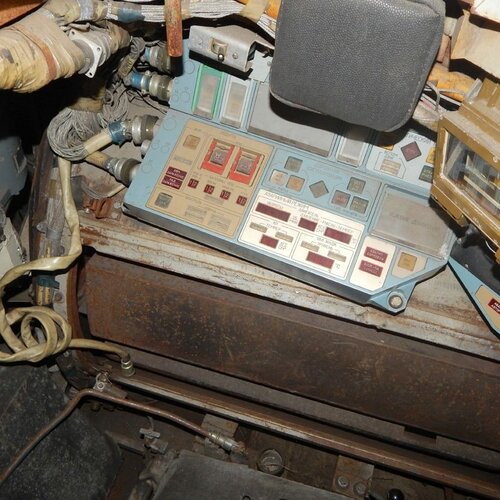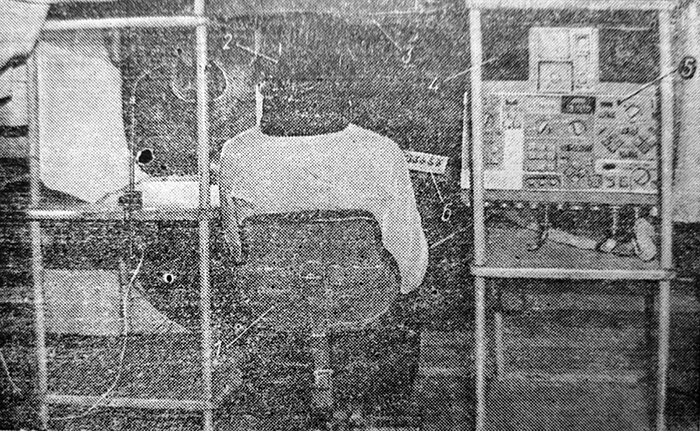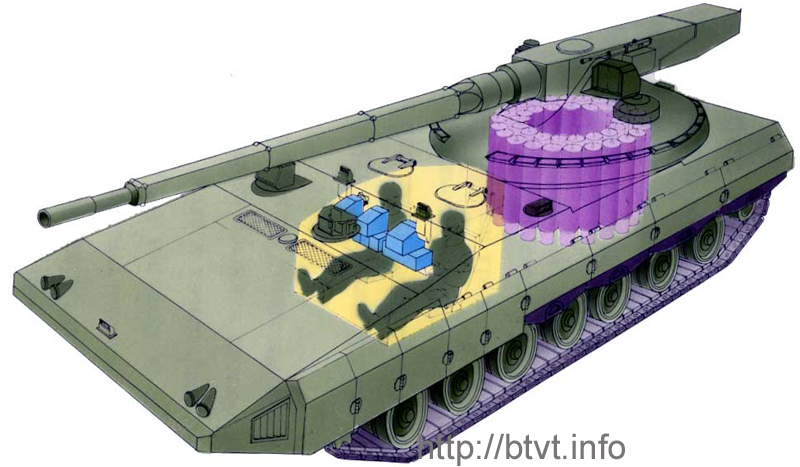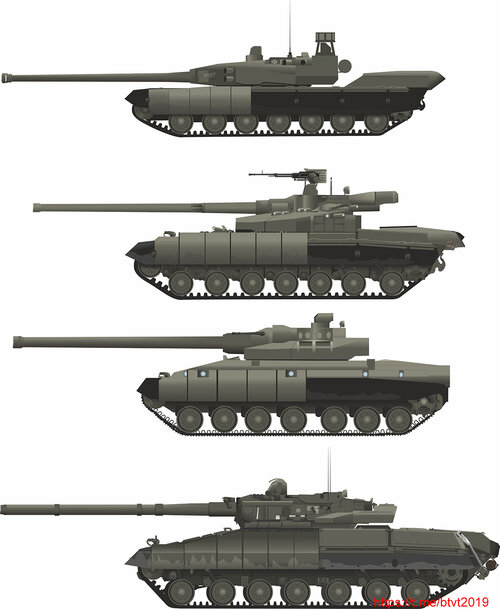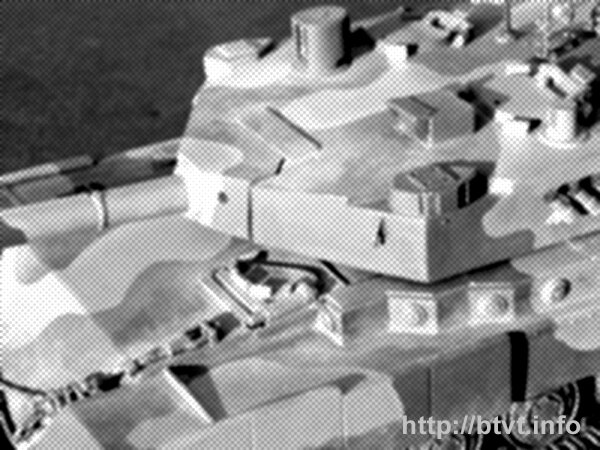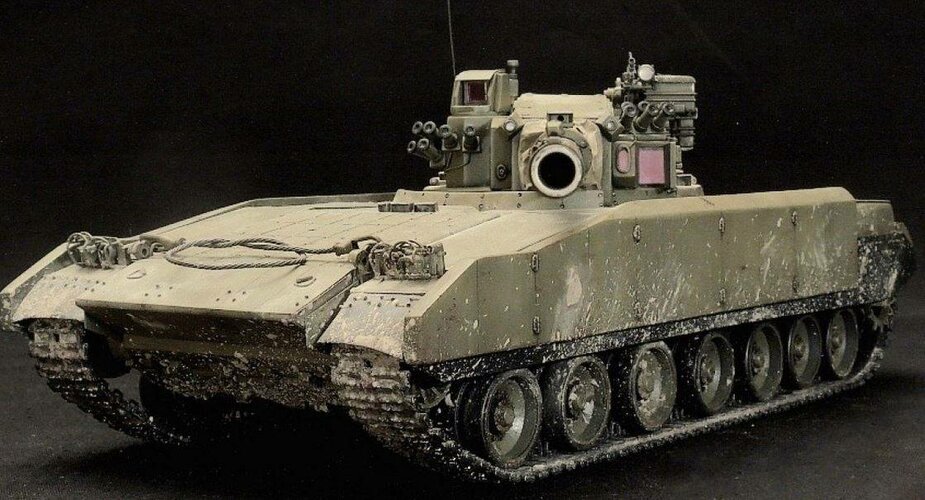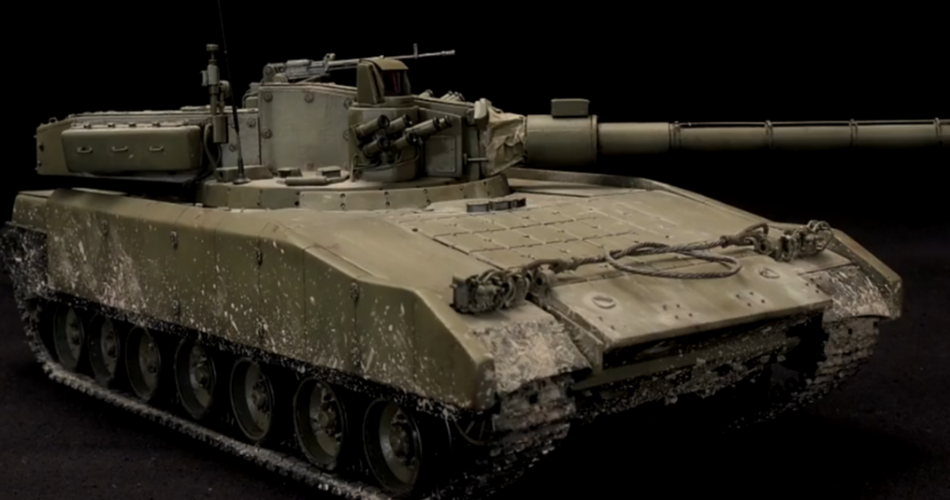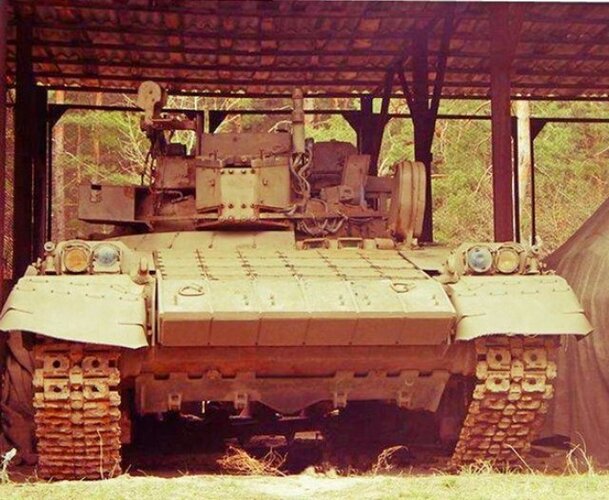I don't think the USSR lasted long enough to determine which was a favorite. The closest frontrunner would be Hammer/477, which produced about a dozen prototypes. Or two dozen. Maybe 30-40. Depends on how much you want to classify 477's incarnations as Hammers, Barriers, or whatever.
All of these tanks were very much experimental, and like the American CATTB, Thumper, and TTB, they wouldn't translate to production models, per se. The Americans had already abandoned the idea of "Abrams 2" that CATTB basically represented by 1992 and were chasing a 40-ton medium represented by TACOM's Future Combat System (singular, the plural one came later) which only appeared in automotive mockup form as HD-40T. There was an old Discovery Channel episode featuring Wombat in the 1990's. It died.
Kharkiv's major programs of the 80's go something like this: Object 490A and then 490 in all its flavors. This is like half a dozen tanks at least, the most famous/radical/stupid ones developed by Evgeny Morozov at Kharkiv, as I understand, and they explored radical stuff like two-man tanks, robotic turrets, and articulated hulls. This is all under the program of Perspective 2001 (which may just be a name of a shillpost by Evgeny to sell his dumb tank to the Armor Directorate), which analyzes futuristic tanks, "universal combat platforms" (Obj. 299), and robotic vanguards for the Soviet Army of the year 2000. If you think the Japanese and Americans were smitten with the idea of 5th generation computing, you ain't seen nothing yet. Then 490 is leaked along with an early codename to NATO, which is published in the Washington Post or New York Times, and everyone loses their minds, and the project is reshuffled as Ob. 477 "Hammer", but at that point it had about as much in common with the early 490s as T-64 does T-80 anyway. There's a clique of dudes at btvt who slob the knob of Morozov's stupid wagons but they are actually really shitty thanks to the power of hindsight (2-man crews simply do not work and given how hard it's been to make relatively simple tanks since the 1980s for some reason, are still as far away as they've ever been; conversely the assertion by the clique writers that "VLS tanks" are far away seems to be rather unfounded: Israel has been using them since the 1970s, essentially, and launch geometry didn't stop the Japanese from making VLS trucks in the form of Type 96 or the Sons of Abraham from using Jumpers), and Morozov seems to have been full of himself honestly. Kovalyuh also was a bit of a spicy boi but at least he had common sense.
OTOH there's a diary of the Boxer development program which talks about Boxer/Rebel/Hammer in detail by Yuri Apukhtin (The Last Charge of the Soviet Tank Engineers or something), it's basically his memoirs and he was one of the design team guys working on the 1980s Soviet supertanks at Kharkiv.
So here goes a rough timeline of the 477:
1980: Morozov also bad mouthed a lot of the more conventional 3-man tanks that were basically souped up T-64s and tried to sell 2-man tanks to the Soviet Army because he was the Most Soviet Tankineer and I guess he felt that if you got rid of the third man you could fit the gun in his seat instead. Considering the USA fell for the same nonsense 10 years later I suppose there is some merit until you discover how dumb 2-man tanks are.
1982: Nick Shomin, top dog and head honcho of the Kharkiv bureau pulls all the big men into a meeting and they talk about their tanks. Kovalyukh, who is Evgeny's subordinate, shows up with a bland but sensible 3-man design incorporating protected ammo storage, in-line crew seating, an external turret mount, and a high pressure 125mm cannon (possibly 2A66? the gun was notional and seems to have waffled between 125-130mm). It's the tank on post #13 in this thread. Morozov shows up with a dumb 2-man tank that has dual non-articulated body and a gun that can't shoot sideways because it's angled weirdly. Morozov laughs at Kovalyukh's primitive boring tank and claims his tank is much cooler, radical, and therefore better. Shomin says that Morozov might be right but he sides with Big K instead and Morozov gets mad and sulks for a year in his room working on his much dumber tank instead.
1983: Big K and some other dudes work on a full scale model of the tank interior. Morozov sulks. Big K feels confident that the tank will work and everyone else agrees except Morozov. This is important because the gunner seats ahead of the commander, while the TC is inclined and seated behind him. The layout is similar to how the Abrams tank is, with the gunner's head tucked between the thighs of the TC, but if the loader's seat were a magazine and there was a massive fire bulkhead between the two compartments. It's pretty spicy and cool.
1984: Some dour men from the Armor-Automotive (Soviet TACOM) and Artillery Directorates show up with a gaggle of straight laced experts in tow and tell Kharkiv that they need a bigger cannon to crack the new super tanks of the future. They look at 490 with disapproval and shake their heads or mutter among themselves at everything Big K shows them. Big K gets pulled into Nick's office and K and some of his boys start hammering out (ha) the new caliber, and a big talk is whether they want a 140mm or 152mm gun. The papinions are strong but one the Armor Directorate's tanknology expert came prepared and wheels in a bunch of numbers and slides and convinces everyone 152mm is great since they'd been working on it in Russia for the past couple years anyway so there's no reason to get into a tizzy about calibers. Okay debate over.
1985: Someone set up Kharkiv the bomb. NATO finds out about Object 490, the "Rebel" codename, and that Ukraine is building a 152mm armed supertank. Everyone loses their minds. The codename is changed to "Hammer" and the Object code is changed to 477. The source of the leak was never identified, maybe it was an American spy satellite or maybe there was a CIA mole or something. Who knows, not important. Work continues.
1986: The Big Year. Gorbachev's purges are in motion and Kharkiv needs to be reorganized to cut out the chaff and leave the cream. Apukhtin becomes chief of optics development at Kharkiv, but some bureaucratic stuff happens, so Yuri is put into a position equal to his boss and so now the optics department is headed up by two guys who can't agree on anything. Hot memes ahead but this is the lesser of the issues facing the fire control system's troubled history with optronics. Small P (Polyakov) is made chief design lead after a month when the final Kharkiv bureau shuffling is done, probably because he isn't spicy like a habanero like Big K but spicy like a bell pepper.
Big K realizes that the combat imaging systems are going to need supreme, Herculean efforts to overcome because the need for long range thermal sights on the 477 is going to be hard given the improved performance of the 152mm cannon over the 2A46 and the T-80's shitty sight system just isn't enough. What he wants is something similar to EMES-15 but what he has to work with is at least a generation behind in performance, similar to Leopard 1 thermal imagers. He calls Krasnogorsk and asks them what they can do and they say that while it's not the best, they might have to install the T-80U's Agava-2 (the shitty FLIR) into the production wagons while waiting for the next generation of FLIRs.
Other problems creep in like the lack of an engine powerful enough to drive the tank. Kharkiv begins designing a super engine to power the 477 at the same time. Also the automatic loader doesn't want to function with the large ammunition due to vibration problems or something. The fact that it isn't a carousel but rather similar to Stryker Mobile Gun System or Expeditionary Tank is probably why it doesn't work in practice, even the United States took decades to work that problem out and it required a new magazine. Oh and the ammo drum that the Soviets used has two piece rounds instead of single piece 105mm, but it's still a dual magazine feeder design is the point I'm making. I don't have a picture of the loader system and while I'm sure there are some on Google, I just don't know if they're accurate, but like Stryker MGS/Expeditionary it fed a small drum from a big drum (actually two big drums, one held projectiles the other held the propellant) and the small drum fed the gun with 8 shots. It was dumb.
At this point, the only things going to schedule are the cannon, which the Russians have promised to provide via General Livchenko of the Tank Directorate but they haven't called back, and the armor arrays which are pretty much finished. Everything else is broke. The engine doesn't want to start, the fire control system is perennially problematic, and the rest of industry isn't providing good enough components for the implementation of the FCS.
At the same time (actually, the first event), E.A. Morozov gets the "You're Fired!" speech from his boss. I don't know why he was fired specifically, maybe he was selling bad memes, said "Do you know who my father is," a few too many times, or maybe he said something snooty in a meeting about how Shomin was just a small brained shill for 3-man wagons. Maybe it's because he sulked for 5 years like a petulant child and kept flipping over figurative tables every time someone mentioned Kovalyukh's grossly superior tank instead of actually working to assist the bureau. Big K's hard work and devotion to tanknology are recognized by Nick and he is given his old boss's job. Nick is now his boss. Big K retires due to being sick with something (it turns out to be colon cancer). Morozov's firing and Big K's retirement are separated by about a year of possibly the hardest work done on the tank.
1987: Engine works. A lot of FCS problems are isolated to LNIRTI's bus controller is causing power surges or something and breaking all the fire control system components. Yuri is mad as hell and half suspects sabotage, but it's probably just the USSR being shit at making microelectronics. Small P works in the optics division with Yuri.
1988: Big K dies, 477 lives. Kharkiv never mated the Agava-2 sights to the 477, having said no to the offer from Krasnogorsk, and the automatic loader still doesn't work but they got it to work on a static test stand. The first austere prototype fires one round successfully and jams or something, but is extremely fast and comfortable to drive. It also likes to detrack itself and get stuck in the ground.
1989-1990: More vehicles are built, armor protection is refined, armor modules are lightened with addition of titanium alloys, and a 30mm cannon is added like on BMP-3 to yeet trucks and stuff on suggestion of the Tank Directorate I guess. A dozen or so prototypes of motley and varying configurations are built and the final vehicle still has problems. The FLIRs are still a no-show and Krasnogorsk doesn't know when they'll be able to make better ones than Agava-2. The automatic loader still jams a bunch but it shoots more than once in a row, usually, the vehicle's protection is now within parameters needed to defend against next generation guns, and the mobility and track vibration issues have been solved. Things are looking up.
1991: The Soviet Army orders a single battalion of 50 tanks to be put through the paces. Then the Soviet Union collapses.
1992: Somehow the 477 team still has a job! Ukraine needs new tanks, so Object 477 is renamed "Barrier" and then "Note" (like music, not sticky notes), and Kharkiv scraps the Soviet era dual piece cannon. Instead they move to a somewhat simpler if still conceptually complex single piece large caliber (about as big as the American 140mm ATACS) 152mm cannon, with a 6 or 8-round feeder drum fed by two 12-round replenishers. Mostly this is because the 2A73 is Russian and General Livchenko can't promise shit to Kharkiv. In addition the Kharkiv Bureau is ordered to produce a new TIS system to fill in the literal empty voids where they're supposed to go.
The 90's: 477 fades away slowly. A full up prototype of Note is built during the trainwreck that is the 90's, and morphs into about a dozen prototypes, that do odd ball tests and demos until the 2000s. The last time Object 477 fired her gun was the early 2000s when she did a live fire to test the Kharkiv KB-A 152mm. A lot of her technology found its way into the piecemeal T-84 Oplots, Yataghans, and Oplot-BM that were supposed to fuel the development of 477 into a production vehicle but never happened really, due to Kharkiv never delivering on products, the Germans eating the export market, and the 1990's generally decaying the tax base and funding of the Malyshev Factory and associated complexes.
Russia waffled on helping the Ukrainians with this and eventually didn't bother since they were busy producing T-90 for their domestic use beginning in the early 1990s. There were studies for improving Warsaw Pact T-72s (or maybe just Russian/Soviet ones) as the "new" T-72BU in the 1980s for the 2000s by slapping a T-80U turret on T-72BM, and this turned into T-90. Eventually. T-90 found export homes in India (instead of good tanks, like T-84 and possibly Obj 477) and 477 herself (himself?) may find a home in Chinese tank factories in the future. The Russians at the same time as Musical Note and Barrier were also working on a super tank, the Object 195, which was derived from some failed competitor to 477 shat out by UVZ, and never worked properly for the same reasons 477 never had a functional FLIR. The stopgap solution was to acquire Catherine-FCs from France in the early 1990s for the T-90, and try to sit on it, but I think there may have been issues with basically everything in 195 since it died.
The backup was Object 148, a more austere version that would use a 125mm high pressure gun (the 2A82 trialed in the 80s) and a less radical fire control system derived from T-80U or T-90 or something. Western armies know 148 as the T-14.
andrei_bt or anyone can feel free to correct my mistakes or misinterpretations, since I don't speak Russian. Maybe there's a translated copy of the memoirs or something done right instead of by machine.

